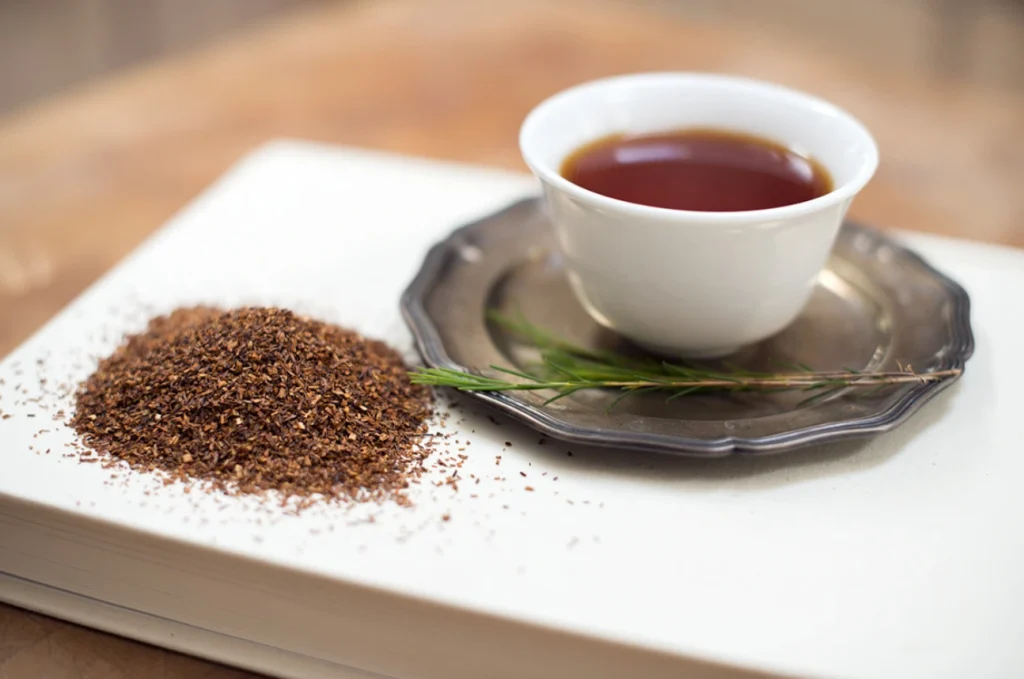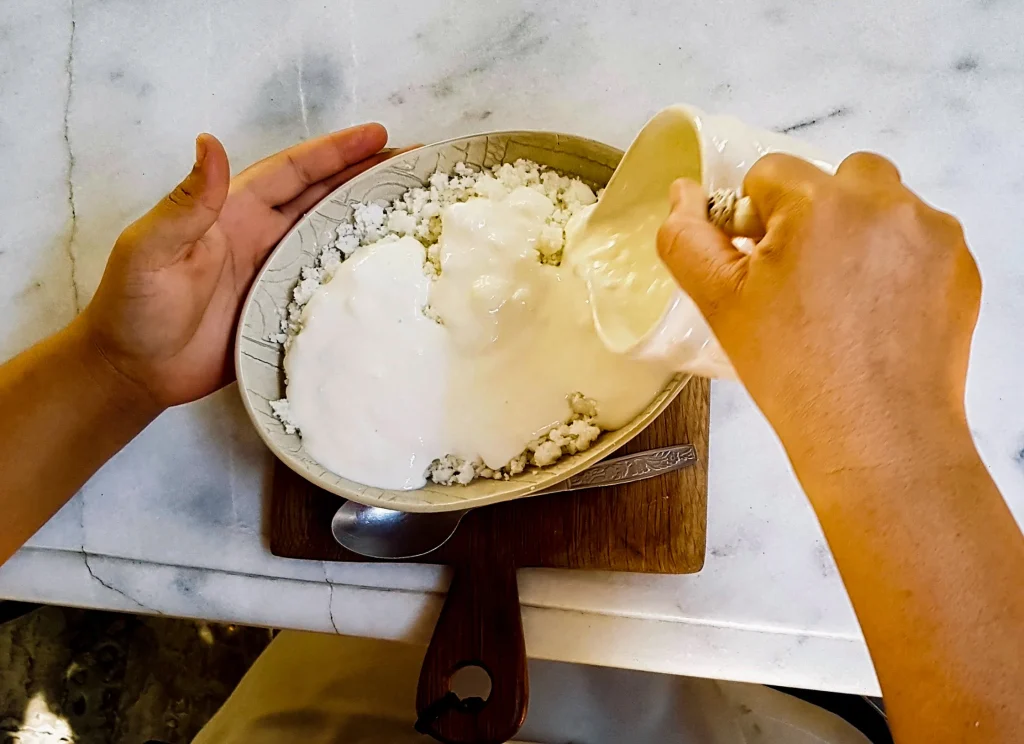South African Refreshments: Rooibos Tea, Homemade Mageu, and the Traditional AMASI Recipe
Rooibos, often referred to as “red bush” or “African red tea,” is a popular herbal tea that comes from the leaves of the Aspalathus linearis plant, native to the Cederberg region of South Africa. Rooibos has gained international popularity for its unique flavor, potential health benefits, and caffeine-free nature. Here’s an overview of rooibos tea:
Characteristics of Rooibos:
- Flavor Profile:
- Rooibos has a distinct, naturally sweet and nutty flavor. It is often described as having notes of caramel, vanilla, and a mild earthiness.
- Color:
- When brewed, rooibos tea has a vibrant reddish-brown color, which has led to its nickname as “red tea.”
- Caffeine-Free:
- One of the key attractions of rooibos is that it is naturally caffeine-free, making it a popular choice for individuals looking for a tea alternative without the stimulating effects of caffeine.
- Antioxidant Properties:
- Rooibos is rich in antioxidants, including aspalathin and quercetin, which may help neutralize free radicals in the body.

- Health Benefits:
- While more research is needed, some studies suggest that rooibos may have potential health benefits, including anti-inflammatory and antispasmodic properties. It is also believed to support heart health and may contribute to overall well-being.
- No Oxalic Acid:
- Unlike traditional teas such as black or green tea, rooibos does not contain oxalic acid, which is known to inhibit calcium absorption in the body.
Brewing Rooibos Tea:
Ingredients:
- Rooibos tea leaves or tea bags
- Water
Instructions:
- Boiling Water:
- Bring water to a boil. The ideal temperature for brewing rooibos is around 200°F (95°C).
- Tea Leaves or Tea Bags:
- Place rooibos tea leaves or tea bags in a teapot or teacup. Use about 1 teaspoon of loose tea leaves per 8 ounces of water.
- Pouring Water:
- Pour the hot water over the tea leaves or tea bags.
- Steeping:
- Allow the rooibos to steep for about 5 to 7 minutes. Adjust the steeping time based on your preference for a stronger or milder flavor.
- Sweetening (Optional):
- Rooibos is naturally sweet, but you can add honey, sugar, or other sweeteners if desired.
- Serve:
- Strain the tea leaves or remove the tea bags, and serve the rooibos tea hot. It can also be enjoyed over ice for a refreshing iced tea.

Rooibos is a versatile tea that can be enjoyed on its own or blended with other herbs and flavors to create unique blends. It is a popular choice for individuals seeking a caffeine-free, flavorful alternative to traditional teas.
Recipe for the Refreshing South African Drink – AMASI
Amasi is a traditional South African fermented milk product, similar to yogurt but with a distinctive taste and texture. It is also known as maas in some regions. Amasi is made through a natural fermentation process that involves allowing raw milk to sour and thicken, creating a tangy and slightly effervescent dairy product. Here’s a basic explanation of how amasi is traditionally prepared:
Homemade Amasi:
Ingredients:
- Raw milk (preferably unpasteurized)
- A small amount of amasi or cultured buttermilk as a starter culture (optional)

Instructions:
- Prepare the Milk:
- Start with fresh, raw milk. You can use unpasteurized milk for a more traditional approach, but pasteurized milk can also be used.
- Warm the Milk:
- Heat the milk to a lukewarm temperature. You want it warm enough to encourage the fermentation process but not too hot to kill the beneficial bacteria naturally present in raw milk.
- Inoculate with Culture (Optional):
- If you have access to amasi or cultured buttermilk, you can add a small amount as a starter culture. This helps kickstart the fermentation process. Alternatively, you can allow the natural bacteria in the environment to ferment the milk.
- Fermentation:
- Pour the milk into a clean container with a lid. Cover the container and let it sit at room temperature. The fermentation process typically takes anywhere from 12 to 24 hours, depending on the ambient temperature.
- Check for Thickness:
- Check the consistency of the milk. It should thicken and develop a slightly sour taste. The fermentation is complete when the milk has reached the desired thickness.
- Refrigerate:
- Once the amasi has reached the desired consistency, refrigerate it to slow down the fermentation process. The cold temperature will also enhance the flavor.

- Serve:
- Serve amasi chilled. It can be enjoyed on its own or used in various recipes.
Note: The flavor and texture of homemade amasi can vary based on factors such as the type of milk used, the ambient temperature during fermentation, and the length of fermentation.

Commercially produced amasi is also available in stores, offering a convenient option for those who may not have the time or resources to make it at home. It is a versatile dairy product used in both sweet and savory dishes and is a popular ingredient in South African cuisine.
Home Made Mageu Recipe for a refreshing taste with Family and Friends.
Mageu, also known as amaHewu or amasi, is a traditional South African non-alcoholic fermented beverage. It is a type of fermented porridge that has cultural significance and is consumed for both its nutritional value and refreshing taste. Here’s an overview of how Mageu is typically made:
How to Make Mageu:
Ingredients:
- Maize meal (cornmeal)
- Water
- Sugar (optional, for sweetening)
- Additional flavorings (optional)
Instructions:
- Mixing the Maize Meal:
- In a large bowl, mix maize meal with water to form a smooth, lump-free paste. The ratio of maize meal to water can vary based on personal preference, but a common ratio is around 1 part maize meal to 4 parts water.
- Cooking the Mixture:
- Transfer the maize meal mixture to a large pot and bring it to a boil. Stir continuously to prevent lumps from forming.
- Simmering:
- Once it reaches a boil, reduce the heat to low and let it simmer. Continue stirring to avoid the mixture sticking to the bottom of the pot.
- Fermentation:
- Allow the mixture to cool to room temperature. Cover the pot with a clean cloth and let it ferment for approximately 1 to 2 days. During this time, natural fermentation occurs, creating a slightly tangy flavor.
- Straining (Optional):
- Some variations of Mageu involve straining the fermented mixture to remove solid particles, resulting in a smoother beverage. This step is optional and depends on personal preference.
- Sweetening (Optional):
- Add sugar to sweeten the Mageu if desired. The amount of sugar can be adjusted according to taste.
- Additional Flavorings (Optional):
- Some variations of Mageu include additional flavorings such as vanilla, cinnamon, or nutmeg to enhance the taste.
- Serve:
- Mageu is typically served chilled, especially on hot days. It can be enjoyed on its own or alongside traditional South African dishes.

Variations of Mageu:
- Mageu le Molomo:
- This variation includes the addition of meat (molomo) during the fermentation process, giving the Mageu a unique flavor.
- Commercially Produced Mageu:
- While traditional Mageu is homemade, commercial versions are also available in stores, offering convenience and a consistent taste.
Mageu is not only a refreshing beverage but is also considered a nutritious drink, rich in probiotics and other beneficial compounds. It holds cultural significance in South Africa and is enjoyed by people of all ages.
Read More South Africa’s Signature Drinks: Mampoer, Van der Hum, Witblits, and Umqombothi

